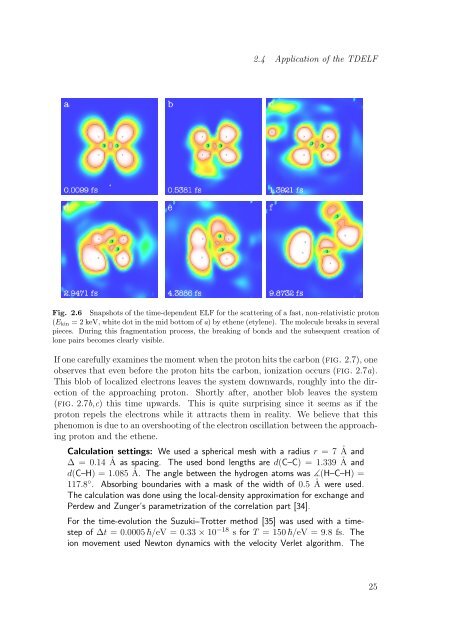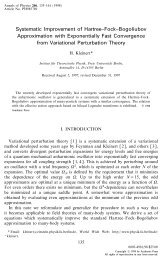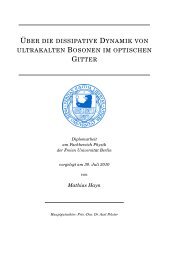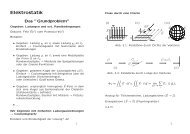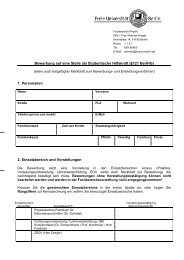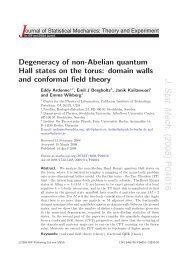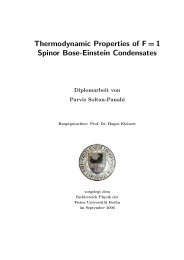Time-Dependent Electron Localization Function - Fachbereich ...
Time-Dependent Electron Localization Function - Fachbereich ...
Time-Dependent Electron Localization Function - Fachbereich ...
Create successful ePaper yourself
Turn your PDF publications into a flip-book with our unique Google optimized e-Paper software.
2.4 Application of the TDELF<br />
Fig. 2.6 Snapshots of the time-dependent ELF for the scattering of a fast, non-relativistic proton<br />
(E kin = 2 keV, white dot in the mid bottom of a) by ethene (etylene). The molecule breaks in several<br />
pieces. During this fragmentation process, the breaking of bonds and the subsequent creation of<br />
lone pairs becomes clearly visible.<br />
If one carefully examines the moment when the proton hits the carbon (fig. 2.7), one<br />
observes that even before the proton hits the carbon, ionization occurs (fig. 2.7a).<br />
This blob of localized electrons leaves the system downwards, roughly into the direction<br />
of the approaching proton. Shortly after, another blob leaves the system<br />
(fig. 2.7b,c) this time upwards. This is quite surprising since it seems as if the<br />
proton repels the electrons while it attracts them in reality. We believe that this<br />
phenomon is due to an overshooting of the electron oscillation between the approaching<br />
proton and the ethene.<br />
Calculation settings: We used a spherical mesh with a radius r = 7 Å and<br />
∆ = 0.14 Å as spacing. The used bond lengths are d(C–C) = 1.339 Å and<br />
d(C–H) = 1.085 Å. The angle between the hydrogen atoms was ∡(H–C–H) =<br />
117.8 ◦ . Absorbing boundaries with a mask of the width of 0.5 Å were used.<br />
The calculation was done using the local-density approximation for exchange and<br />
Perdew and Zunger’s parametrization of the correlation part [34].<br />
For the time-evolution the Suzuki--Trotter method [35] was used with a timestep<br />
of ∆t = 0.0005 /eV = 0.33 × 10 −18 s for T = 150 /eV = 9.8 fs. The<br />
ion movement used Newton dynamics with the velocity Verlet algorithm. The<br />
25


